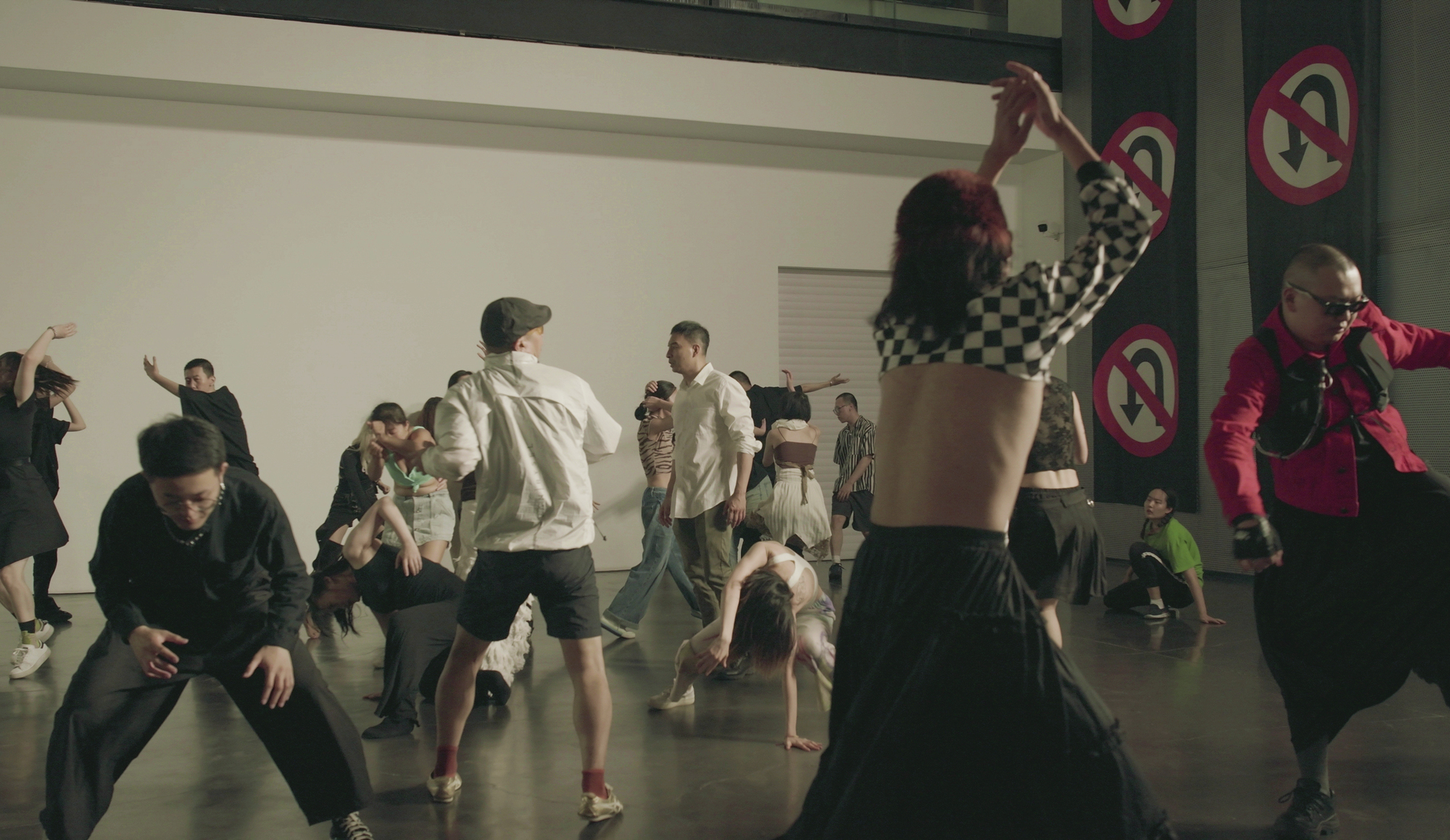Hong Kong: Wang Tuo
By ArtAsiaPacific

WANG TUO, The Second Interrogation, 2023, still from video installation in two parts: 24 min 30 sec (part one) and 29 min 26 sec (part two). Courtesy the artist and Blindspot Gallery, Hong Kong.
Wang Tuo: “The Second Interrogation”
Blindspot Gallery
If Wang Tuo’s earlier video The Interrogation (2017) carefully analyzes the body language and tactics employed by the Chinese national security apparatus during an interrogation process, the second episode, which premiered at Hong Kong’s Blindspot Gallery, delves into artists’ psychological states when confronted by the machine of censorship.
The Second Interrogation (2023) explores the current reality faced by Chinese artists, who often need to conceal their intentions as they are screened by government officials, potentially being “invited for a cup of tea” (questioned by national security) or having their show canceled due to censorship. Offering two perspectives—one of the artist-character and one of the censor—the first part of the double-channel video installation was cleverly arranged in a V-shape at one end of the gallery. Standing in one corner, the audience could hear one character’s inner voice, while vaguely picking up the other’s voice that reverberated in the space— almost as if the audience experiences both the characters’ internal thoughts and external conversations together.
Wang’s story unfolds with the artist-character’s talk at a museum, during which he reflects on the real-life 1989 “China/Avant-Garde Exhibition,” where artist Xiao Lu famously fired two bullets at her reflection in a mirror. The censor, disguised as a keen audience member, asked the artist a series of questions regarding the historical meaning of art-making. As the artist explains his own practice—which potentially is also Wang’s self-reflection— the external dialogue fades out and the audience is left with the artist-character’s inner monologue. Despite the sincerity of his questions about the task of an artist and meaning-making, his deep thoughts here could easily collapse into a self-reflective loop. But perhaps this is the point of the video, that Chinese artists are all too often concerned with censorship and grand narratives of responding to the era that they are refrained from creating freely. The video ends on a rather optimistic note, as the censor, moved by the artist’s work, eventually chooses to betray the system.
The plot continues in the second part of the film, a single-channel video situated at the other end of the gallery that features an “interrogation” between a shaman and a ghost, and a group of performers marching against a wall covered with “No U-Turn” signs— yet another tribute to the 1989 exhibition—symbolizing a point of no return. Poetically written by Wang, the spirit’s speech ponders the repeated failure of political movements and the interrelation between Confucian beliefs and modern Chinese societal structure, while stressing the sense of warmth felt in the underground scene. Throughout the film, the artificial nature of how the performance is choreographed to be filmed (with deliberate closeups at times) made it difficult for the audience to engage; and the ghost’s speech, though thought-provoking, becomes didactic. But perhaps this hollow, performative aspect of “a revolution” is what Wang seeks to criticize.
Installed across the walls in the gallery were portraits of Wang’s fellow artists, poets, and performers, but also studies of archival photos taken during the Tiananmen Protest in 1989. The former’s figures are mostly painted lying down, hinting at the “lying flat” movement among young people in China, where passivity becomes a form of resistance. The latter are painted in black-and-white, as an allusion to the recent “A4 Revolution” where protestors held blank pieces of A4 paper in defiance of the state’s draconian Covid-19 measures. In Wang’s perspective, the events of 1989 never ended, they simply evolved. History does not repeat, it only continues.
While it was encouraging to see so many people show up for the opening and artist talk, at its core the show was a dedication to his fellow creators and art workers at a time of upheaval. Courageously addressing the current turbulence and examining an artist’s own practice, Wang poses questions that constitute a necessary interrogation, not only of the system but also of artists themselves. Interweaving both a sense of hopelessness and optimism, the show captured the formation of a force that seeks to learn from the past and move forward.
.jpg)







